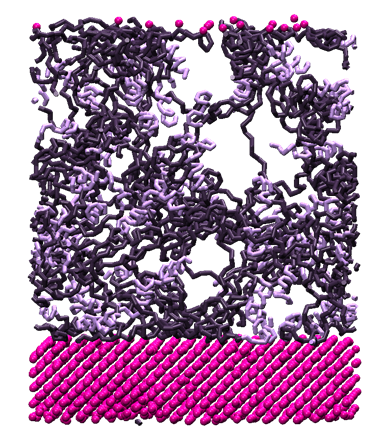As a large, rapidly expanding and increasingly diverse market, home and personal care companies face various challenges in product development. One of these mayor challenges for the companies in this industry is the need to better understand the nature of molecular adsorption or desorption from common substrates, in particular cellulosic (as a bio based product) and some synthetic adsorbents since they are readily available. Since adsorption and desorption are essential to the cleaning process, understanding of these phenomena is a critical business issue for the home and personal care industry. Optimizing the cleaning process, on fabrics or even the human skin can open up new opportunities, also for new markets such as bio-based care products.
In this webinar Dr. Joe Feldkamp will present how SCIENOMICS technology can help in Product Optimization, by discussing how to understand and optimize the adsorption and desorption phenomena vital to the cleaning process. Dr. Feldkamp was Research Technical Leader at Kimberly-Clark from June 2000 until retirement in March of 2019, at which time he joined the startup Tayos Corp.
Additionally, SCIENOMICS will show how Materials Simulations can help to predict other key properties of detergent formulations, like for example the critical micelle concentration (CMC) or the micelle size distribution dependent on the salt concentration.
ABSTRACT of Dr. Feldkamp’s presentation: Understanding Adsorption and Desorption processes for chemicals relevant to the Home and Personal Care Industry
Personal care industries often encounter a need to better understand the nature of molecular adsorption or desorption from common substrates, in particular cellulosic and some synthetic adsorbents since they are readily available. One simple application involves desorption, where a substrate needs to serve as a carrier for a substance that offers a health benefit to a consumer when eventually transferred over to skin.
Another application is more concerned with adsorption, a function essential to cleaning. In the case of transfer, the balance between adsorption and desorption has to be carefully tuned so that the substrate can reliably hold onto a target molecule, but then release it when needed. This brief talk will look at the use of a standardized work flow scheme to study both adsorption and desorption from a cellulosic-like substrate. The workflow involves construction of a substrate, adsorbate docking and finally desorption, facilitated by using a kind of “virtual tweezers” to pluck the adsorbate molecules from the substrate. The envisioned workflow could actually be useful for a number of applications ranging from erosion and wear to controlled release of drugs to biological sensors.
Anyone interested in surfactants, detergents, perfumes, emulsions, etc. will benefit from this free webinar and Q&A session. We will be pleased to have you with us!
The examples presented will demonstrate how to translate a real-life problem in a simulation strategy applied on the digital twin of the product of interest. In particular:
- Study adsorption and desorption processes on bio- based and other materials
- Improving detergents by predicting performance of surfactants
- Determine micelle size distributions in detergent formulations
- Machine Learning model for predicting critical micelle concentration

Pluronics surfactant on an unpolar surface in aqueous solution (water not displayed)
Register to our webinar
